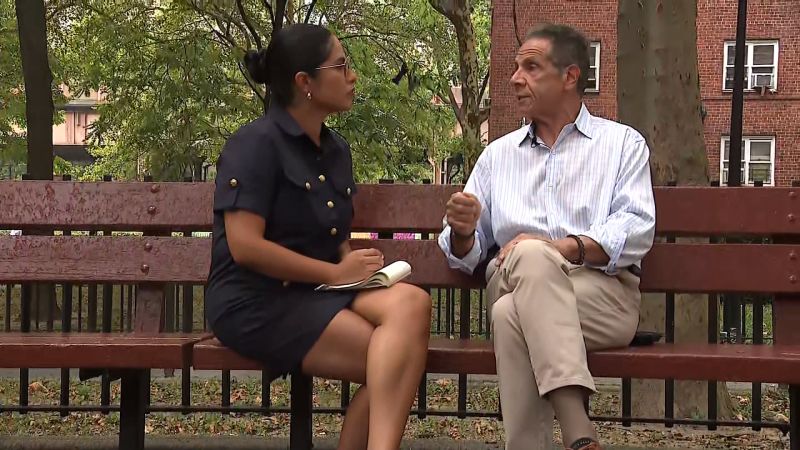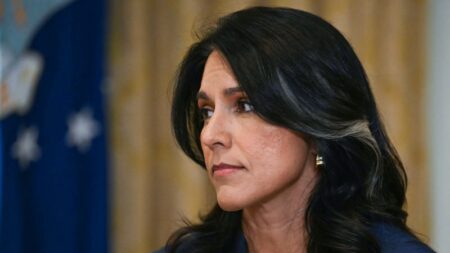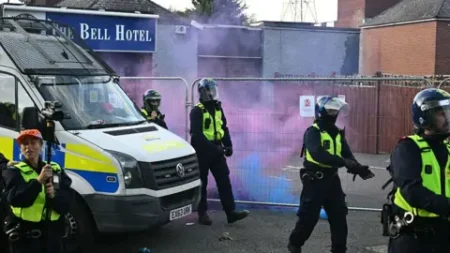Andrew Cuomo has recently embarked on a campaign journey that takes him through the streets of New York City, engaging with residents across its five boroughs. Over the weekend, he made notable stops in Harlem, where public housing cookouts were taking place, and Brooklyn, where he even indulged in pouring rum behind a bar. One of his significant appearances was during the Colombian Day Parade in Queens. This grassroots approach is part of a renewed campaign strategy for Cuomo, who is now running as an independent candidate after a challenging defeat in the Democratic primary to newcomer Zohran Mamdani by a striking 12 points last month.
Cuomo’s campaign seeks to resonate with New Yorkers who are grappling with the rising cost of living and various anxious sentiments regarding life in the city. During his visit to the Johnson Houses in East Harlem, he mingled with residents celebrating their annual family day. While grilling burgers and hot dogs, Cuomo took the opportunity to connect with them directly, capturing selfies and extending a call to action with his message of “vote for me in November.” His efforts appear to have borne some fruit, as many older, primarily Black residents recognized him and reached out, recalling his past as governor. However, not everyone was supportive, with some residents expressing their skepticism about his chances of success in the current political climate.
Despite some mixed receptions, Cuomo remained composed. He reflected positively on the candid nature of New Yorkers, indicating that they are forthright about their opinions and expectations of him. Acknowledging that the political landscape has shifted since his earlier tenure, Cuomo has taken steps to reevaluate his approach. He admitted to miscalculating the enthusiasm and turnout of young and first-time voters during his primary campaign, recognizing the importance of addressing issues surrounding the affordability crisis and housing costs facing New Yorkers.
His June Democratic primary loss marked a significant shift in the city’s political dynamics, particularly with Mamdani’s unexpected rise as a candidate who focused heavily on affordability through various progressive proposals. The priorities of the young electorate played a key role in influencing the outcome of the primary, and Mamdani capitalized on social media to engage voters who were disillusioned with the status quo.
Cuomo has since voiced skepticism regarding the feasibility of some of Mamdani’s more ambitious proposals. He urged the need for a realistic conversation about the complex issues facing New Yorkers while cautioning younger citizens against idealistic views that may not hold up under the weight of governmental complexities. He argued for a focus on increasing the housing stock to afford greater affordability rather than relying on simplistic solutions.
Criticism has arisen from Mamdani’s campaign, suggesting that Cuomo’s criticisms stem from an insincere attempt to connect with younger voters. Top representatives from his campaign assert that young people can see through Cuomo’s disingenuousness stemming from his past leadership during a turbulent period.
The former governor’s campaign has increasingly positioned him against Mamdani’s policies, characterizing them as potentially detrimental and insisting that they pose a risk to the economic stability of New York. Despite these challenges, Cuomo remains committed to living in New York City, asserting his identity as a resident despite having not lived in Queens for years. His remarks suggest a delicate balancing act of attempting to garner voter support while also managing criticism and an awareness of the changing complexities of urban governance.
While addressing public safety concerns, Cuomo has aligned himself with other candidates, emphasizing the necessity for more police presence in combating rising crime rates—a campaign strategy contrasting sharply with Mamdani’s more hopeful vision. As both affirm their candidacies, the upcoming election will test each candidate’s ability to resonate with a diverse electorate and address the pressing issues that New Yorkers face in their daily lives. As the political narrative progresses, the stakes climb high for both Cuomo and Mamdani in a city yearning for constructive change amidst the chaos of public sentiment.











